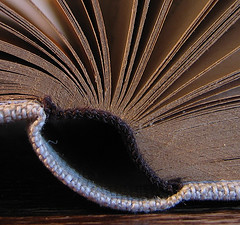A new book was added to the collection just in time for the S.T. Gill exhibition at the State Library of Victoria.
The book is "S.T. Gill & his audiences" by Sasha Grishin, has been jointly published by the National Library and State Library.
The cover of the book is a depiction of Gill's 'Doing the Block'
The Block, on fashionable Collins Street, was a stylish shopping strip in the 1880s. It was also a famous spot for promenading and people-watching, an activity known as 'doing the Block'. He completed this lively painting three months before his death at the age of 62, when he died a pauper on the steps of the Post Office.
Samuel Thomas Gill, or STG as he was universally known, was Australia's most significant and popular artist of the mid-nineteenth century. For
his contemporaries he epitomised 'Marvellous Melbourne' basking in the glow of the gold rushes. He worked in South Australia, Victoria and New South Wales and left some of the most memorable images of urban and rural life in colonial Australia. A passionate defender of Indigenous Australians and of the environment, Gill in his art celebrated the emerging quintessential Australian character. This is the first major comprehensive book to be devoted to Gill and presents a radical reassessment of one of the most important figures in Australian colonial art and reproduces, in some instances for the first time, some of the most startling images from nineteenth-century Australian art.
The exhibition "Australian sketchbook : colonial life and the art of S.T. Gill" is in the Keith Murdoch Gallery until 25th October. If you can't make it to Melbourne there is also an online version. But it doesn't quite measure up to standing in front of the originals. I had a quite moment in front of his 'The Duff children' 151 years after the event.
And while I was familiar with Gill's goldfield watercolours, I was unaware of the origin of his 'Country NW of tableland' (in fact I normally call it 'Doctor Hunger & Captain Thirst' after the cover of the book which had it as the cover).
Gill made this watercolour drawing in 1846 while on the privately funded Horrocks Expedition (of Horrock's Pass fame) to the South Australian interior. In this sweeping panorama, Gill adopted a well-known strategy from Romanticism by showing two figures, seen from behind, contemplating the vastness of nature and thus drawing the viewer into the scene depicted. The taller figure with the gun is Horrocks, the other with a sketchpad is Gill – one claiming and naming the country in front of him, the other recording it.
A rare opportunity to see more than 200 of Gill's paintings, drawings, watercolours and prints at the exhibition or in the book.
Sunday, 23 August 2015
Subscribe to:
Post Comments (Atom)








No comments:
Post a Comment